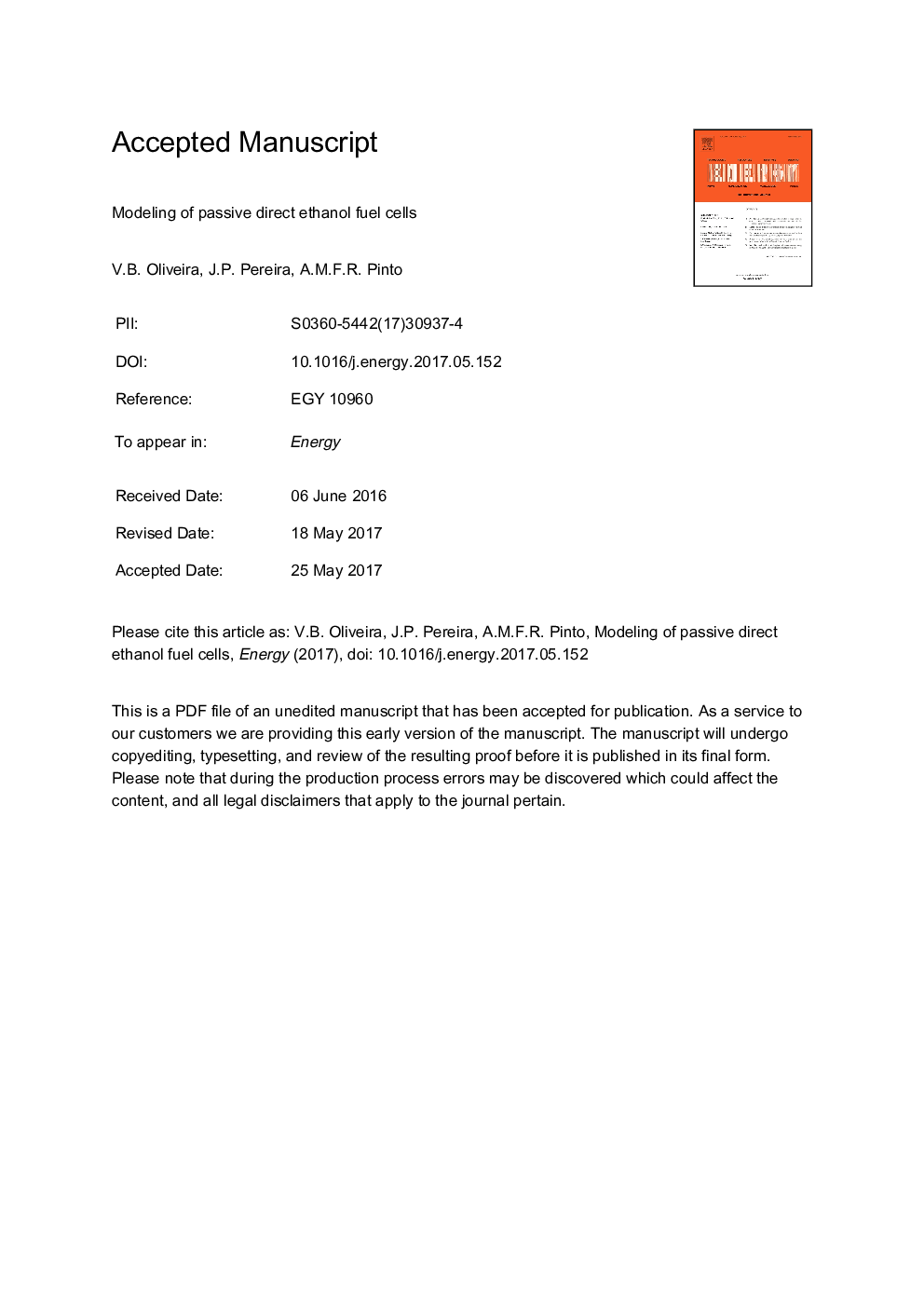| Article ID | Journal | Published Year | Pages | File Type |
|---|---|---|---|---|
| 5476587 | Energy | 2017 | 45 Pages |
Abstract
Direct ethanol fuel cells (DEFCs) are promising substitute power sources for compact and mobile applications. Passive feed systems are especially desirable because they are less expensive, more compact and simpler than the active systems. Aiming for the introduction of passive DEFCs in the market, this work describes a steady-state and one-dimensional model considering the electrochemical reactions and all the transport phenomena (heat and mass transport) occurring in a passive feed DEFC. This model can be used to estimate the concentration profiles of the different chemical species, as well as, the temperature distribution on the different layers. Moreover, the model can accurately predict the influence of the operating conditions and design parameters on the ethanol and water crossover rate. The model predictions for the polarization curves are successfully compared with recent published data for different ethanol concentrations. The current model is rapidly implemented and can be a useful tool to optimize the performance of a passive DEFC.
Related Topics
Physical Sciences and Engineering
Energy
Energy (General)
Authors
V.B. Oliveira, J.P. Pereira, A.M.F.R. Pinto,
